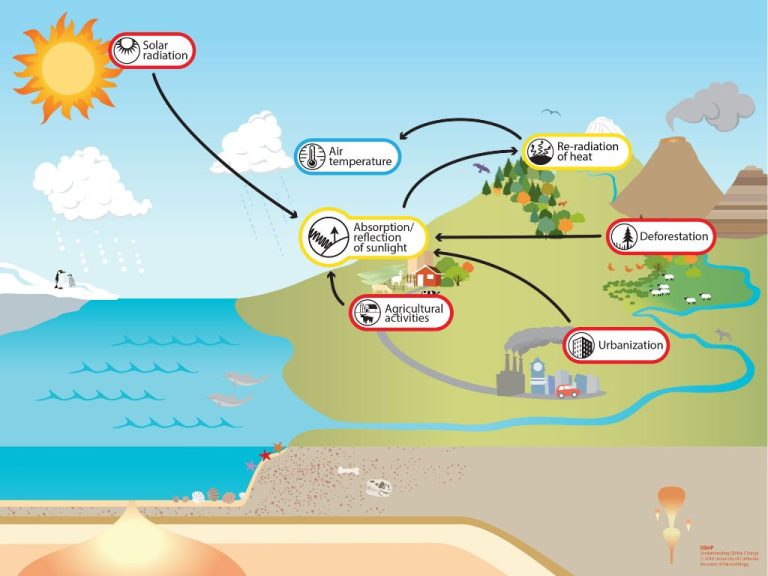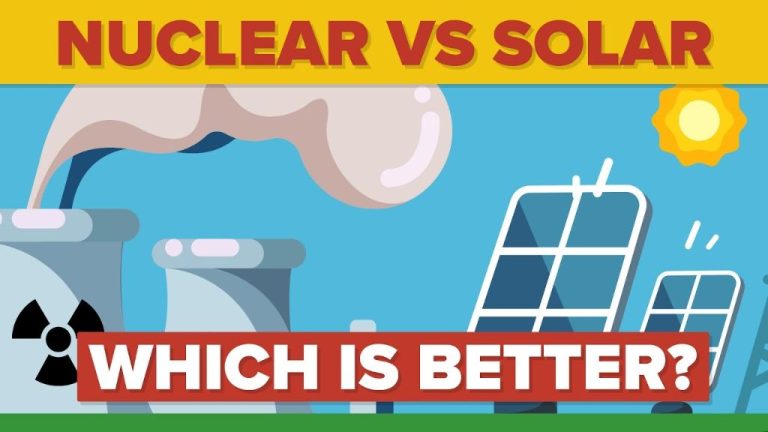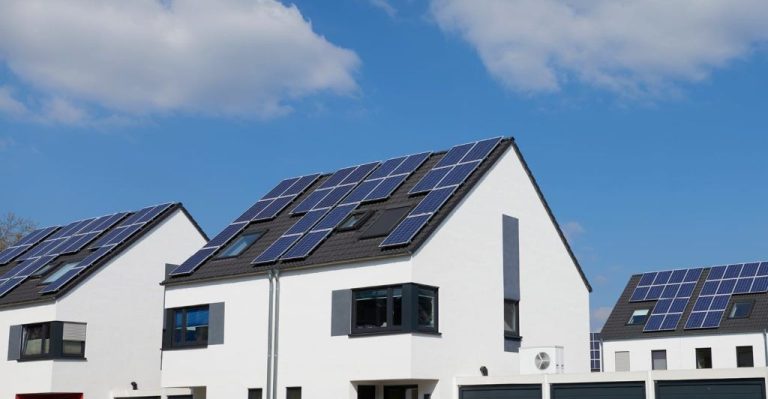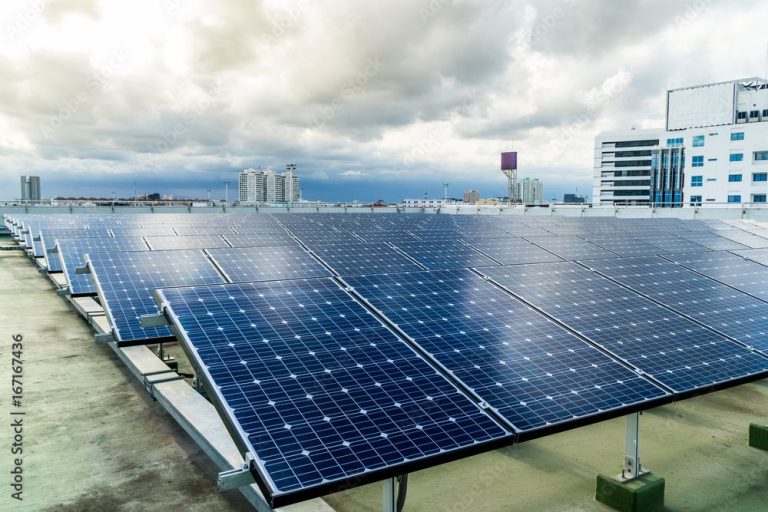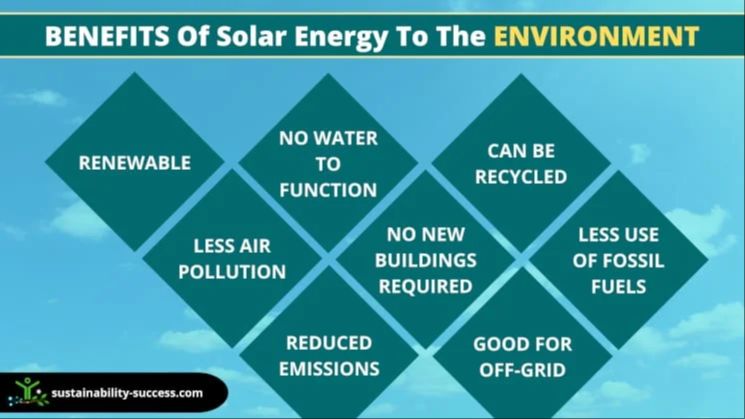What Is The Greatest Environmental Impact From Solar Energy Systems?

Solar energy systems are becoming increasingly popular as a clean and renewable source of power. Solar panels and other solar technologies harness energy from the sun and convert it into electricity. As solar adoption grows globally, there has been more focus on understanding the environmental impacts, both positive and negative, of these solar energy systems.
There are several key areas where solar energy can affect the environment. On the positive side, solar energy produces no air pollution or carbon emissions while operating, improving air quality. Solar also requires very little water to generate electricity. However, there can also be negative land use, water use, and hazardous materials impacts from manufacturing, installations, and disposal/recycling of solar components. These negative impacts should be weighed against the significant climate change and clean air benefits of solar.
In this article, we will provide an overview of the most significant environmental benefits and concerns stemming from solar energy systems. We will examine the impacts in areas such as manufacturing, land use, water use, hazardous materials, and lifecycle emissions. Understanding both the advantages and challenges will lead to more informed solar policies and development practices that maximize benefits and minimize environmental harm.
Manufacturing Impacts
The manufacturing of solar panels does have some negative environmental impacts. According to research from the University of California Santa Barbara, solar panel production is reliant on fossil fuels and involves mining for precious metals like silicon and silver, which contributes to greenhouse gas emissions and habitat destruction (source). The carbon footprint from manufacturing a solar panel is around 20-30g CO2/kWh, with most emissions coming from the energy used to purify silicon and construct the panel (source). The process of making polysilicon also requires immense amounts of energy and water. For instance, it takes over 5 gallons of water to produce 1 kg of polysilicon (source). Some toxic chemicals like hydrochloric acid and sulfuric acid are needed to clean and purify silicon. Improper waste disposal of these chemicals could cause soil and water contamination. However, solar panel manufacturing is rapidly becoming cleaner and greener. Some companies are shifting to more renewable energy for production and implementing closed-loop recycling systems to reduce emissions and waste.
Land Use
Solar farms require large amounts of land to generate utility-scale amounts of electricity. According to a report by the National Renewable Energy Laboratory (NREL), utility-scale solar facilities require around 3-10 acres per megawatt of electricity produced (https://solareis.anl.gov/guide/environment/). For a typical 100 MW solar farm, this translates to 300-1000 acres of land. Most large solar facilities are built on previously undeveloped land, which can negatively impact wildlife habitat and vegetation.
The clearing and grading of land for solar farm construction removes native plants and can fragment wildlife habitats (https://iee.psu.edu/news/blog/maximizing-hydrological-and-environmental-benefits-solar-farms). Large solar arrays in desert environments can impact the habitat for threatened desert tortoises, kit foxes, and other sensitive species. Solar facilities built on agricultural land take areas out of crop production and may disrupt the habitat of grassland birds. Proper siting, design, and mitigation measures are needed to minimize habitat loss from utility-scale solar development.
Water Use
Water is needed to keep solar panels clean and free of dust in order to maintain their efficiency. There has been some concern that large solar farms could strain local water supplies, especially in arid regions like deserts. However, research shows the water usage is relatively minimal. According to Analyzing the Water Usage Implications of Solar Panels, solar PV systems use around 20-30 gallons per megawatt hour of electricity produced. This is far lower than fossil fuel plants which can require hundreds of gallons per megawatt hour. Studies have found solar PV uses less than 1/3rd the water of coal power plants and 1/4th the water of natural gas plants.
In addition, solar panels can actually benefit water supplies. Research from Duke University found that rooftop solar can conserve water by reducing the need for power generation from fossil fuels. Rooftop solar was estimated to save 4 trillion liters of water across the United States when compared to an electricity mix without solar power. Therefore, while solar farms do require some water for cleaning, the overall impact on water resources is minimal or even positive when considering the water savings from displacing fossil fuel electricity generation.
Hazardous Materials
Some types of solar panels contain hazardous materials like lead and cadmium that require special handling when being disposed of. These toxic heavy metals can potentially leach out of solar panels at end-of-life if not properly disposed of and recycled.
According to the EPA, crystalline silicon panels often contain lead, a hazardous material, in the soldering of panels as well as in some solar film technologies (EPA, 2023). Thin film solar panels may contain cadmium telluride or copper indium gallium selenide, which are also considered hazardous. Even small amounts of these toxic metals can contaminate soil and water if not handled and recycled properly.
It’s important that obsolete solar panels are disposed of responsibly as hazardous waste instead of adding to landfills. Proper solar panel recycling can recover up to 90% of materials for reuse.
Benefits
Solar energy provides substantial environmental benefits compared to fossil fuel-generated electricity. By displacing electricity from coal and natural gas, solar energy reduces harmful air pollutants and greenhouse gas emissions. According to the U.S. Energy Information Administration, solar PV and solar thermal energy avoided over 50 million metric tons of carbon dioxide emissions in 2018 alone (1). Solar energy improves air quality by reducing emissions of sulfur dioxide, nitrogen oxides, and particulate matter, resulting in fewer incidents of respiratory and heart diseases (2).
In addition, solar PV systems generate electricity at the point of use, reducing the amount of energy lost in transmission across utility grids. Rooftop solar also decreases electricity demand on the grid, which helps avoid building additional power plants and transmission infrastructure. The modular and scalable nature of solar panels means the technology can be deployed rapidly and at various scales to meet electricity needs. Overall, solar power protects the environment by curbing air pollution, mitigating climate change, and supporting smarter electricity infrastructure.
Sources:
(1) https://www.eia.gov/energyexplained/solar/solar-energy-and-the-environment.php
(2) https://www.energysage.com/solar/health-environmental-benefits-of-solar-energy
Recycling Impacts
The recycling process for solar panels aims to recover high value materials, especially silicon and silver. However, recycling is not feasible for all types of solar panels yet. The oldest solar panels use crystalline silicon solar cells, which are relatively easy to recycle. But newer thin-film technologies like cadmium telluride (CdTe) and copper indium gallium selenide (CIGS) are more difficult to recycle (1). The costs to recycle a panel range from $20-30 currently, versus only $1-2 to send it to a landfill (2).
Proper solar panel recycling reduces the need for more mining of raw materials like silicon, silver, tellurium, and indium. It also keeps toxic materials like lead, cadmium, and chromium out of landfills where they could contaminate soil and water. However, the volume of end-of-life panels is still low, so recycling capacity needs to be dramatically scaled up. It’s estimated that the U.S. will eventually generate over 1 million tons of solar panel waste per year, requiring huge investments in recycling infrastructure (3). More research is also needed to make recycling cost-effective and minimize waste.
Sources:
(1) https://cen.acs.org/environment/recycling/Solar-panels-face-recycling-challenge-photovoltaic-waste/100/i18
(2) https://hbr.org/2021/06/the-dark-side-of-solar-power
(3) https://e360.yale.edu/features/solar-energy-panels-recycling
Regulations
There are several regulations around solar energy at the federal, state, and local levels that aim to manage the potential impacts. At the federal level, the EPA has authority to regulate hazardous waste under the Resource Conservation and Recovery Act (RCRA). Solar panels containing hazardous materials like lead and cadmium may be subject to federal hazardous waste regulations when disposed. The EPA provides guidance on solar panel recycling and disposal. Some states like California, Washington, and Minnesota also have solar panel takeback and recycling laws.
The manufacturing of solar panels is regulated in terms of worker safety and manufacturing by-products. For example, under the federal Clean Air Act, solar cell and panel manufacturing facilities must reduce VOC emissions. Several voluntary sustainability standards such as UL 4703 also aim to improve solar manufacturing impacts through setting criteria on chemical use, life cycle assessments, and responsible recycling.
At the local level, solar installations are subject to zoning and permitting regulations which vary across jurisdictions. Many municipalities have adopted solar access laws to protect homeowners’ rights to install solar. Overall the patchwork of federal, state and local regulations aim to encourage solar adoption while managing its potential environmental impacts.
Future Outlook
As solar technology continues to advance, there are ongoing efforts to reduce the environmental impacts from solar energy systems.1 Improving manufacturing processes and developing new solar technologies will be key for minimizing environmental effects in the future.
More energy-efficient and sustainable manufacturing of solar panels is a major focus area. For example, many companies are shifting to lead-free solar panel designs to reduce toxicity. There is also research into replacing silver with copper for solar cell connections to lower costs and environmental damage from mining silver.2
Emerging thin-film solar cell technologies like cadmium telluride and copper indium gallium selenide use fewer raw materials and have less energy-intensive manufacturing than traditional crystalline silicon solar panels. However, they can still contain hazardous components. Continued innovation in solar cell and panel materials will help mitigate environmental concerns.
In terms of land use, new solar power plant designs and technologies can reduce the footprint per megawatt generated. Some options include building elevated solar panels to allow grazing livestock underneath and floatovoltaic systems on water reservoirs instead of terrestrial sites.
Overall, addressing environmental impacts is an important consideration for the solar power industry going forward. With improved manufacturing techniques and new solar technologies, the future outlook is good for minimizing the negative environmental effects from solar energy systems.
Conclusions
After reviewing the environmental impacts of solar energy, a few key areas stand out as needing the most improvement. The manufacturing process of solar panels currently relies heavily on raw materials that are energy intensive to extract and refine. Better recycling initiatives could help recover these materials and reduce mining demands. Solar farms also require large land areas, so strategic site location is important to minimize effects on natural habitats and agricultural lands. Water usage for cleaning solar installations, especially in arid regions, should be optimized as well.
That said, solar energy remains one of the cleanest renewable sources available today. Unlike fossil fuels, it emits no air pollutants or greenhouse gases during operation. As solar technology continues advancing, efficiency will improve and larger amounts of clean electricity can be generated per module. With responsible manufacturing practices and siting decisions, solar power can provide major environmental benefits over conventional energy sources.
Overall, solar energy is a promising technology for transitioning towards a more sustainable energy system, but it still has areas that need improvement. With ongoing research and responsible implementation, solar can maximize its advantages while minimizing its footprint.

